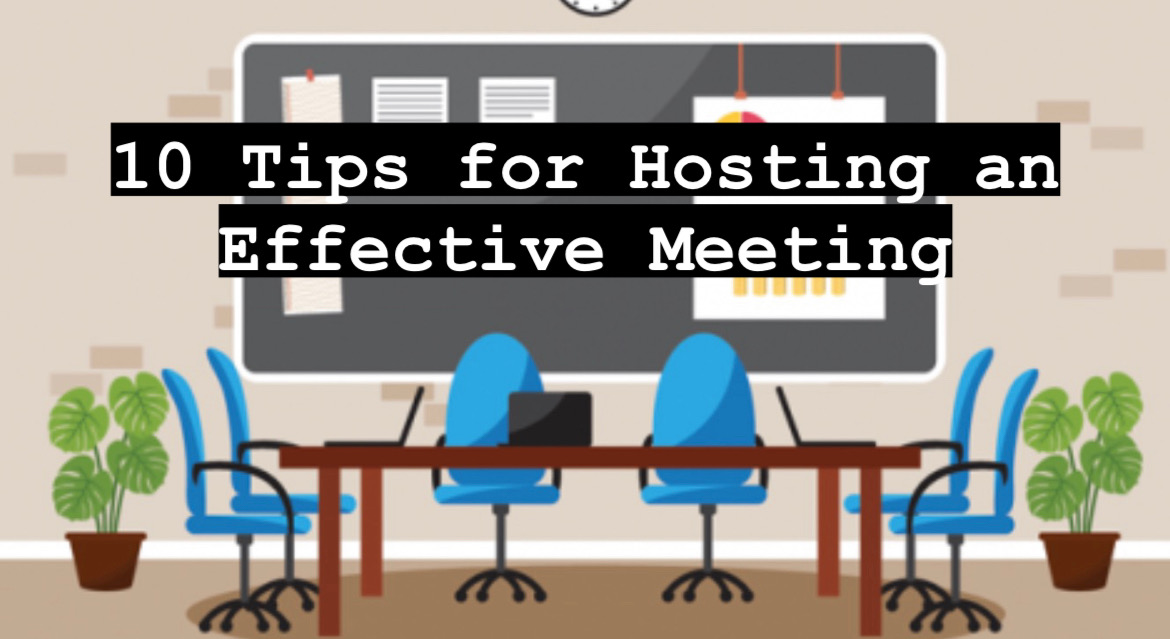-
10 Tips for Hosting an Effective Meeting

Meetings are necessary wastes of time, right?
That’s meant to be a funny commentary but it may reflect employee sentiment in your business. If it does, meetings can be hazardous to your company culture and may even be a dreaded part of your employees’ days.
If you think your employees feel this way about your business meetings, it’s time to adopt the following rules and begin hosting your most effective meetings yet.
10 Rules for Effective Meetings
An effective meeting means you accomplish your business goals in a timely fashion. These rules will help with that. While there may be quite a few on this list, following them will help ensure that the meeting runs smoothly and accomplishes the goals set for it. Remember, a meeting that is a waste of everyone’s time will color how people view future meetings with your business.
1. Never make a meeting out of something that can be done in an email. So, the next time someone wants to hold a meeting just to give a status report, nip it in the bud.
2. Keep the number of attendees under 15. It is difficult for everyone to be heard in a large group. Plus, particpants will feel less needed and will be more likely to tune out.
3. Always have an agenda and stick to it.
4. Make pre-meeting work clear and assign it to individuals if prep is required.
5. Create a "parking lot" for topics that come up but are not relevant to the agenda. You don't want to address them then but they may still be important to revisit in the future. Capture them and then look over them after to meeting to re-evaluate.
6. Ensure that participants understand every compliant must be supported with a solution. If someone comes without one, place it in the parking lot to discuss later.
7. Call on folks who are not being heard and would like to speak up.
8. Know that employees' time is costing you as a business owner money. Make sure meeting hosts understand what it is costing the business to keep everyone in a meeting room together and not doing their primary jobs. Ensure the hosts believer the value behind the meeting exceeds the costs and that everyones time is valuable.
9. Eliminate corporate structure in meetings. Most people believe meetings should be held between managers of departments even when the issues or information exists at other levels. For instance, if your meeting is focused on providing a better customer experience and your customer service front line has ideas to share, there's no need for manager to bring them forward. Give the employee with the idea a chance to speak. It's good for morale and hearing it from the person who is in direct contact with the customers can give everyone insights they might not get from management.
10. Try to keep meetings under an hour. In order to ensure everyone is focused and not stressed, shorter meetings are better. if necessary, assign work outside of the meeting but keep face-to-face time away from job duties to a minimum. If the meeting needs to run longer than that, provide the necessary break time for people to absorb the information and check in with their respective job duties/check messages. One way to host shorter meetings is to host them standing up. This gives everyone an incentive to say what they need to and then break.
While these meeting rules may seem numerous, they are important to the business. They will assist you in meeting your business goals and will ensure everyone feels the value in participation. Many businesses that are looking to improve their company culture believe meetings are the way to do it. Meetings only tend to frustrate when there isn’t a business reason behind them.
If you want to get your group together for the sake of them spending time together, don’t turn to a meeting to accomplish that. Instead, organize a team activity or interdepartmental projects that will build connections, not time spent around a table listening to management.
Tell a Friend


